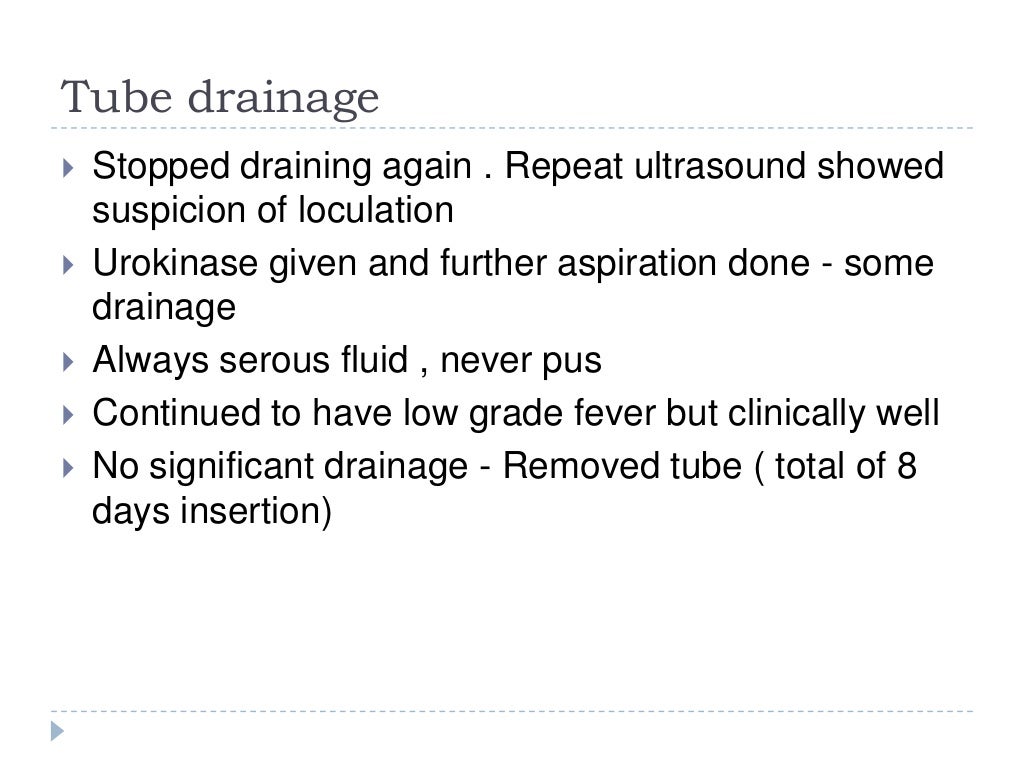

If drainage is incomplete, thoracoscopy, with breakdown of adhesions and debridement of the pleural space, is indicated. Patients with loculated-parapneumonic effusions should be treated with tube thoracostomy and thrombolytic agents. If the fluid recurs a second time, a small chest tube should be placed if the pleural fluid glucose and pH were lower and the LDH higher on the second thoracentesis than on the first thoracentesis. If one or more of the aforementioned criteria are not met, a second therapeutic thoracentesis should be performed, with repeat diagnostic evaluations of the pleural fluid. A pleural effusion is a pathological collection of fluid between the parietal and visceral pleura A parapneumonic effusion is a pleural effusion associated. If the pleural fluid recurs after the initial therapeutic thoracentesis but the patient is doing well clinically and the initial pleural fluid glucose was greater than 60 mg/dL the pH, greater than 7.2 the LDH, less than three times the upper normal limit for serum and the cultures are negative he or she can be observed. A pleural effusion is the most common manifestation of pleural disease. Some of the excess mortality is due to mismanagement of the parapneumonic effusion. A pleural effusion refers to an abnormal collection of fluid within the pleural space. It is seen in about 20 of the hospitalized patients with pneumonia ( 12 ) and approximately 1 million patients develop PPEs annually in the United States (US. The mortality rate in patients with a parapneumonic effusion is higher than that in patients with pneumonia without a parapneumonic effusion. Parapneumonic pleural effusion (PPE) refers to a PE associated with a focus of infection in the lungs, which can be bacterial pneumonia, a pulmonary abscess, or infected bronchiectasis. If the fluid cannot be drained because of loculations, a chest tube should be inserted and thrombolytic agents administered. Parapneumonic effusions occur in 20 to 40 of patients who are hospitalized with pneumonia. Fluid obtained at the therapeutic thoracentesis should be gram-stained and cultured and analyzed for glucose, pH, LDH, white blood cells, and differential cell count. When a patient with a parapneumonic pleural effusion is first evaluated, a therapeutic thoracentesis should be performed if more than a minimal amount of pleural fluid is present. Parapneumonic effusion (PPE i.e., pleural fluid that results from pneumonia or lung abscess) is the most common cause of an exudative pleural effusion.


 0 kommentar(er)
0 kommentar(er)
